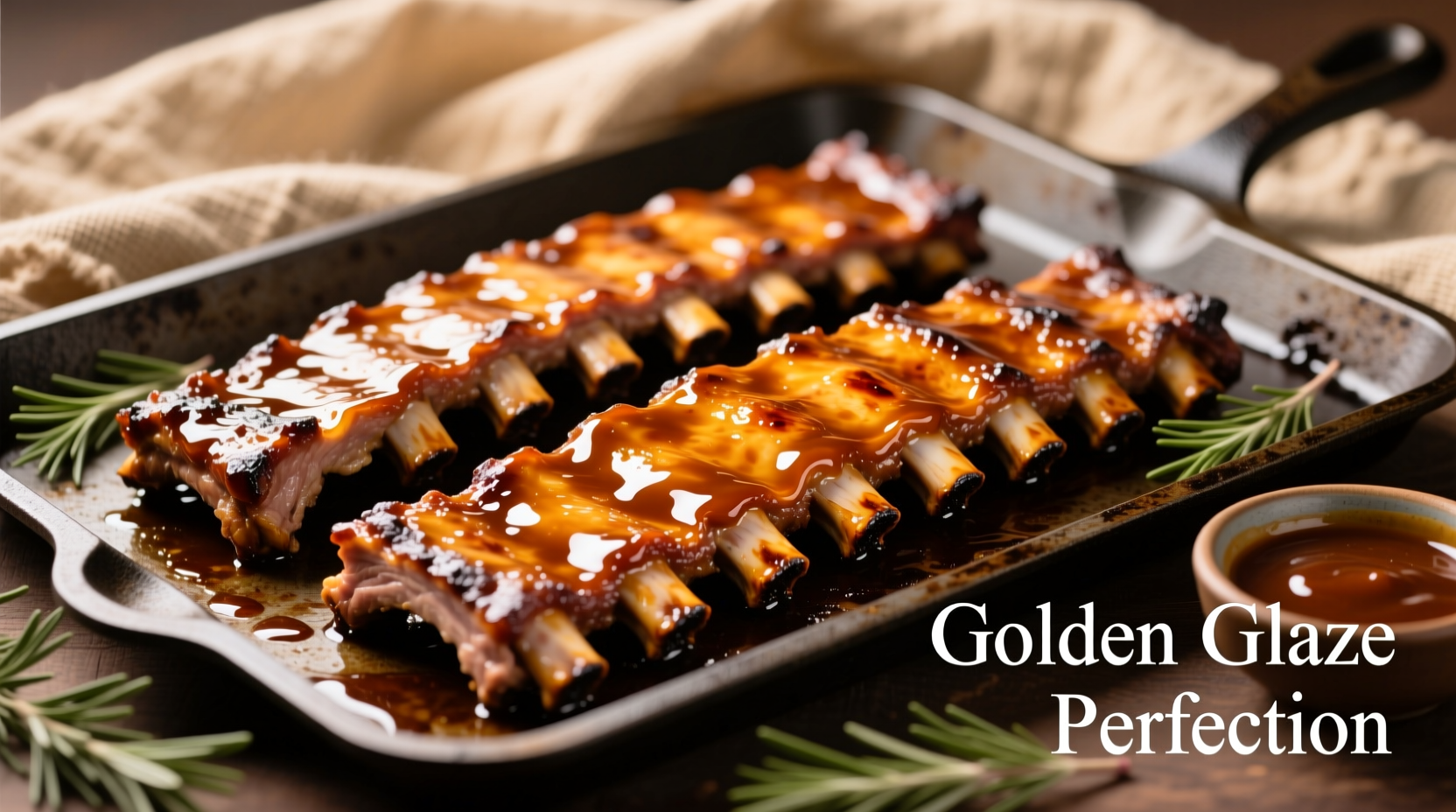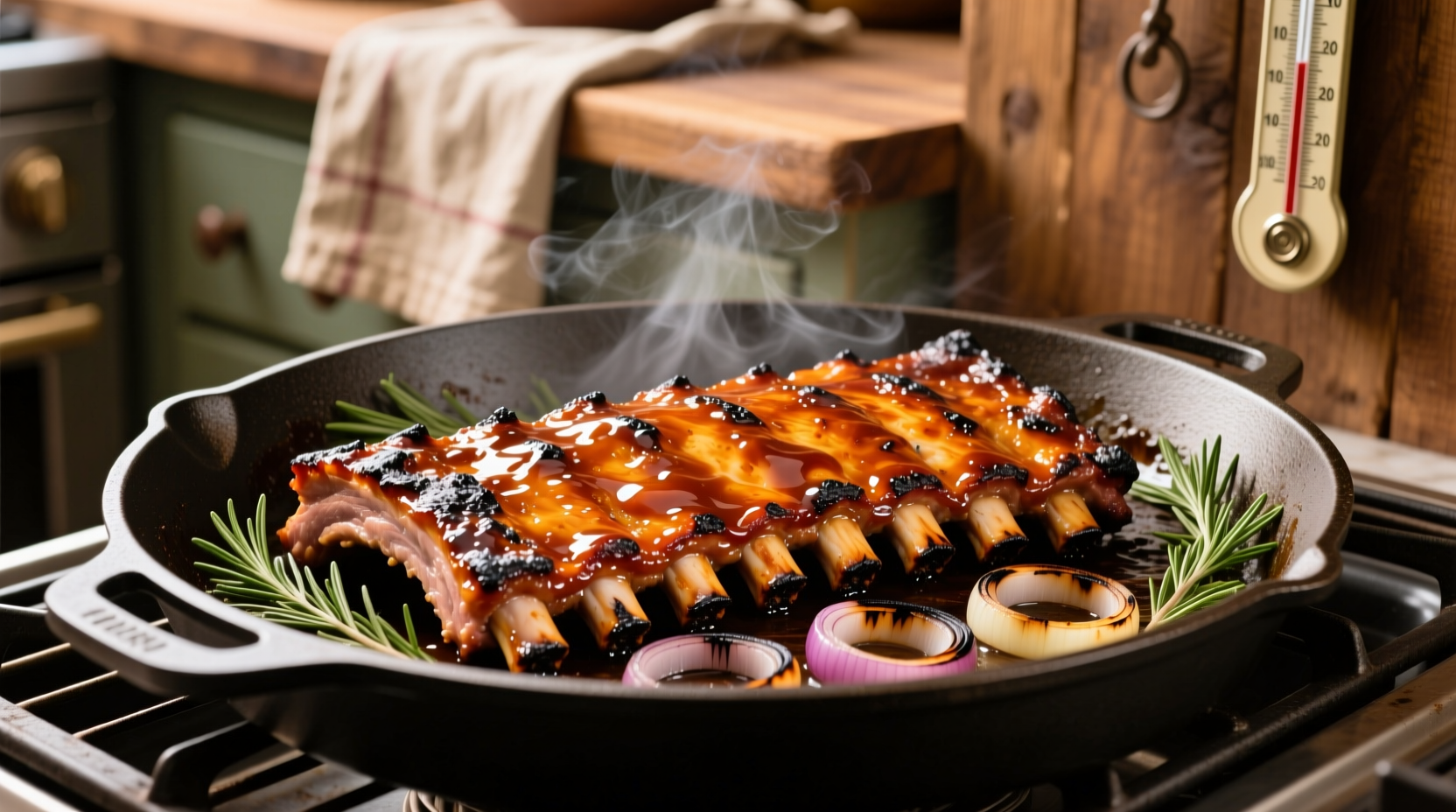Perfect oven-baked spare ribs are achievable in any home kitchen with the right technique. Unlike grilling, oven cooking provides consistent temperature control that prevents drying out while breaking down collagen for melt-in-your-mouth texture. This comprehensive guide reveals the precise steps professional chefs use to create restaurant-quality spare ribs using only your standard kitchen oven.
Understanding Spare Ribs: Selection and Preparation
Before you start cooking, proper selection and preparation make all the difference in your final results. Spare ribs come from the belly portion of the pig, below the baby back ribs, and contain more bone and fat than other cuts. This fat content is crucial for flavor but requires proper handling.
The USDA recommends cooking pork to a minimum internal temperature of 145°F (63°C) followed by a 3-minute rest period for food safety. However, for ribs to achieve that desirable fall-off-the-bone texture, you'll need to cook them much longer at lower temperatures to break down collagen.
| Rib Cut Type | Location on Pig | Cooking Time Range | Texture Profile |
|---|---|---|---|
| Spare Ribs | Belly section, below backbone | 2.5-4 hours | Rich, meaty, more fat content |
| St. Louis Cut | Trimmed spare ribs | 2-3.5 hours | More uniform shape, slightly leaner |
| Baby Back Ribs | Along backbone | 1.5-2.5 hours | Tender, leaner, more expensive |
When selecting ribs, look for:
- Meat that's pinkish-red, not gray or brown
- Good marbling (fat streaks) throughout the meat
- Minimal liquid in the packaging (indicates freshness)
- At least 1/4 inch of fat covering the meat
Preparation is critical for perfect oven spare ribs. First, remove the tough membrane from the bone side using a butter knife to lift an edge, then grip with a paper towel and peel it off completely. This membrane prevents seasoning penetration and causes ribs to contract during cooking. Trim excess fat but leave enough for flavor and moisture.

The Foolproof Oven Method: Step-by-Step
The key to tender spare ribs is low temperature and sufficient time. Here's the professional technique broken into actionable steps:
Step 1: Seasoning and Preparation (15 minutes)
Create a balanced dry rub with 1/4 cup brown sugar, 2 tablespoons paprika, 1 tablespoon each of garlic powder, onion powder, and salt, plus 2 teaspoons each of black pepper and chili powder. Pat ribs dry with paper towels, then massage the rub evenly over all surfaces. Let sit at room temperature for 30 minutes to allow flavors to penetrate.
Step 2: The Foil Wrap Technique (Critical Step)
Place ribs meat-side up on heavy-duty aluminum foil. Add 1/4 cup of liquid - apple juice creates sweetness, beer adds complexity, or broth enhances savory notes. Wrap tightly to create a sealed packet that traps steam. This moist environment breaks down collagen without drying out the meat.
According to culinary science research from the Culinary Institute of America, collagen begins converting to gelatin at 160°F (71°C) but the process accelerates significantly between 190-205°F (88-96°C). This explains why low-and-slow cooking produces tender results.
Step 3: Baking Process (2.5-3 hours)
Preheat oven to 275°F (135°C). Place foil-wrapped ribs on a baking sheet and cook for 2.5-3 hours. The exact time depends on rib thickness - check for doneness by applying light pressure; the meat should easily pull back from the bones.
Step 4: Finishing with Sauce (30 minutes)
Remove ribs from foil (reserve any juices for sauce), place directly on a wire rack over a baking sheet, and brush generously with barbecue sauce. Increase oven temperature to 350°F (175°C) and bake for 25-30 minutes until sauce caramelizes. For extra stickiness, flip ribs halfway through and apply second coat of sauce.
Step 5: Resting (10-15 minutes)
Remove ribs from oven and tent loosely with foil for 10-15 minutes. This crucial step allows juices to redistribute throughout the meat. Cutting too soon causes precious juices to escape, resulting in drier ribs.
Troubleshooting Common Oven Rib Problems
Even with careful preparation, issues can arise. Here's how to solve them:
Ribs Turned Out Tough
If your ribs didn't reach fall-off-the-bone tenderness, they likely needed more cooking time. Return them to the oven wrapped in foil with additional liquid and cook 30 minutes longer. Remember that collagen breakdown is a time-dependent process - rushing this stage guarantees tough results.
Dry or Stringy Texture
Dry ribs usually result from:
- Insufficient liquid in the foil packet
- Temperature too high during initial cooking phase
- Slicing immediately after cooking without resting
Rescue dry ribs by simmering in additional barbecue sauce for 15-20 minutes to restore moisture.
Sauce Burning During Finishing
Sugary barbecue sauces burn easily at higher temperatures. To prevent this:
- Apply sauce during the last 30 minutes only
- Use lower oven temperature (325°F/163°C) for finishing
- Cover ribs loosely with foil during first 15 minutes of saucing
Flavor Variations for Every Palate
Once you've mastered the basic technique, experiment with these flavor profiles:
Asian-Inspired Spare Ribs
Replace standard dry rub with 3 tablespoons soy sauce, 2 tablespoons honey, 1 tablespoon rice vinegar, 1 teaspoon five-spice powder, and 2 minced garlic cloves. Finish with sesame seeds and green onions.
Spicy Chipotle Version
Blend 2 canned chipotle peppers in adobo sauce with 1/4 cup orange juice, 2 tablespoons molasses, and 1 tablespoon lime juice for a bold finishing sauce. Add cayenne to the dry rub for extra heat.
Honey Mustard Preparation
Mix 1/4 cup Dijon mustard, 3 tablespoons honey, 2 tablespoons apple cider vinegar, and 1 teaspoon thyme for a tangy-sweet finish that complements the rich pork beautifully.
Serving and Storage Guidelines
Cut cooked spare ribs between bones using a sharp knife for neat presentation. Serve with classic sides like coleslaw, cornbread, and baked beans. For leftovers, store cooled ribs in an airtight container with any extra sauce for up to 4 days.
Reheat properly to maintain texture: wrap individual portions in foil with a splash of liquid and warm at 250°F (121°C) until heated through (about 20 minutes). Avoid microwave reheating which makes ribs rubbery.











 浙公网安备
33010002000092号
浙公网安备
33010002000092号 浙B2-20120091-4
浙B2-20120091-4